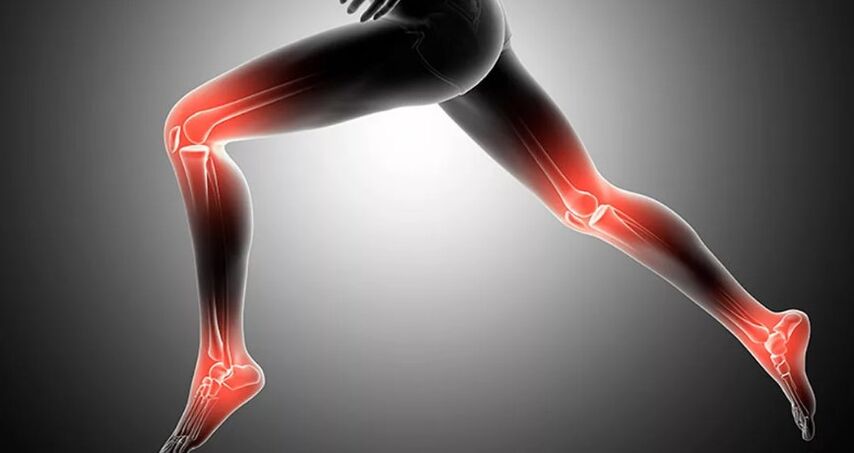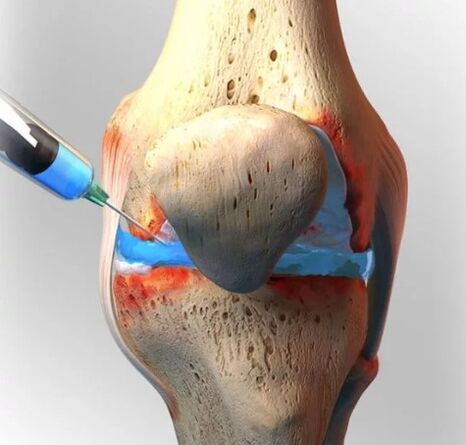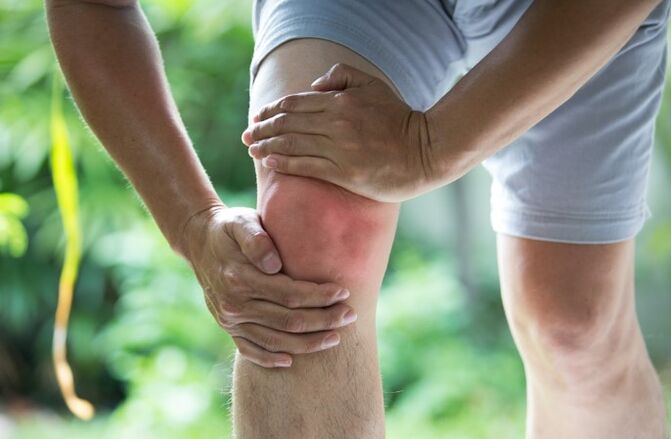Everything you need to know about arthrosis - its causes, signs, varieties and diagnostic methods - promotes the detection of the disease at an early stage. And effective treatment methods allow you to get rid of this disease. Arthrosis is typical of people over 40 years of age. However, impartial statistics show that in recent decades, women aged 30-35 have suffered.
What is arthrosis?
Arthrosis is a chronic joint disease accompanied by pathological changes in Hyaline cartilage and then in adjacent tissues, a joint capsule and a synovial shell. The defeat is a dyspanced and degenerative nature, leading to a change in the structure of joint tissues, to the loss of their functionality. In accordance with the same statistics, arthrosis applies to 12% of the total population of the planet. From 62% to 65% of all episodes of the disease, it falls over 65%. In the pathology, an additional 30-35% of the cases of joint damage are in patients with 40-60 year olds. And approx. 3% are 20-40 years old.
The danger of joint disease is that it is practically not completely cured. Although diagnosed with pathology at an early stage of progression, this promotes the functionality of the joint.
Most often, cases of lesion of arthrosis are diagnosed in such joints:
- Carpal joints;
- cervical and lumbar spine;
- knee joint;
- Hip joint;
- shoulder joint;
- ankle joint;
- Metatarsophalangeal joint.
The disease is more typical of the female population - representatives of the female half of the population suffer more often from this pathology. Arthrosis of the joint joint is ten times more common in women than in the male population.

The likely consequences of joints
During timely treatment, the disease is declared by less developing intensity and, as a result, stopping degenerative and dyspropic changes. This means that timely surgical or therapeutic intervention allows you to maintain the functionality of the joint, to eliminate normal walking and pain.
At the same time, tightening with treatment leads to frequent and stable pain, lameness and swelling of the joint. Progressive pathological changes in tissues deprive them of normal functionality. In a short period of time, in the absence of competent treatment, arthrosis flows quickly into a chronic form. Such consequences result in the need for severe medical attention and regular treatment of the disease during aggregation periods.
In order to avoid the consequences and complications of the first suspicion of development, contact medical professionals. In the early stages of the treatment of arthrosis, the rheumatologist is involved in the treatment. In chronic form, this pathology is treated by an orthopedic traumaologist.
Arthritis
There are many forms and types of this pathology of the joints that differ in such criteria:
- causes (primary and secondary form);
- Stages of arthrosis (classify three stages of progression);
- Localization of pathology (site of the disease and type of joint);
- A form of localization (general and local form);
- The course of the disease (acute or chronic).
Instead of manifesting symptoms, hips, knees, cystic, elbows, shoulders, ankles, cervical arthrosis can be distinguished.
Ethiological signs show that primary pathologies are classified and develops alone without prerequisites and secondary disease. In the latter case, the joint damage to the adjacent tissues as a result of infectious diseases, mechanical disorders, loss of physiological functions of the joint, and progressive inflammatory process, hypothermia, injury or other factors.

Classification in the form of localization includes local and general damage to the joints. In the first case, the disease and the symptoms cover a small part of the joint or certain tissues. In general, it affects multiple joints, or one of them with the full coverage of all joint tissues.
There is a varying intensity at different stages of the progression of the disease. At the same time, the symptoms and complications are lighter, and they can leak the process of tissue destruction and joint functions more -less dynamically.
Depending on the course of arthrosis:
- acute shape;
- chronic form.
Acute form usually manifests itself with increased intensity of the development and severity of symptoms. Painful feelings appear more strongly and morphological changes in tissues move more dynamically. In chronic form, the course of the disease is slowly, with separate signs during the aggravation periods, and should not be cured virtually.
Illness
During the disease, medicine distinguishes the signs of the disease in three stages, the intensity of damage and localization. At the same time, the distinction is related to the types of tissues suffering from pathological changes in all three stages.
- The first degree of joint development of joints is the initial phase of the disease. This is characterized by a mild lesion of cartilage tissue and the loss of physiological functions of collagen fibers. However, in the first stage, minor morphological disorders of the bone tissue and structural changes in the synovial fluid are observed. The joints are covered with cracks and the patient has slight pain instead of localization of pathology.
- The second degree is the development of arthrosis with the increase in dynamics. This stage is characterized by stable pain and chromium appearance. Noteworthy morphological and dystrophic cartilage can be observed and is discovered by bone growth during the diagnosis. Osteophytes are formed - bone growth, which are visualized during the visual examination of the destructive site. At the same time, the degenerative changes in the synovial capsule occur, which leads to its structural exhaustion. The disease can often worsen and regular at this stage. The pain gradually becomes constant.
- The third degree is active progression. At this stage, the synovial fluid is almost completely absent due to its degeneration, and the bone tissue is suddenly with each other. Joint mobility is almost completely absent, and the pain becomes more tangible. The cartilage tissue is also missing due to degenerative and atrophic changes. Treatment of the third degree of arthrosis of the joints is not practical.

In addition to developing these three degrees of pathology, there is an irrevocable destruction of all joint tissues. At this stage, not only productive therapy but also pain syndrome is impossible.
The inflammatory process usually begins with a second degree of damage, in rare cases, in the absence of medical intervention in the first stage. It is then difficult to stop and can lead to secondary pathologies, to develop pathogenic microflora instead of localization of the disease.
In order to exclude serious consequences, treatment should start from first degree and the use of intensive care methods. In the final stages of complete destruction of cartilage tissue, only one method is allowed to drive the patient from pain and joint movement - endoprostteticsk with full or partial replacement of joint components.
The causes of illness
This may be due to primary and secondary factors. In older people, the disease can occur with mixed etiology, ie in the presence of primary and secondary causes. Complex manifestation exacerbates the course of arthrosis and reduces the dynamics of healing.
Most types of this pathology are mainly caused by metabolism. Changed metabolic processes lead to morphological disorders in cartilage and synovial fluid. As a result, changes apply to the entire joint and are often accompanied by the origin of inflammatory local focuses.
In addition to metabolic pathologies, the causes of arthrosis of the joints are as follows:
- Traumatic damage to each tissue or whole joint. This includes dislocations, fractures, tapes, meniscus fractures, penetrating wounds. This cause is much more common in people involved in the sport or whose activities are related to dangerous working conditions and physical effort;
- The inflammatory process often acts as a secondary cause. Inflammation usually develops in patients with gout, psoriasis, rheumatic disorders, and autoimmune pathologies. The joints of the joint are exposed to patients with aggravation of infectious diseases, including tuberculosis, chlamydia, staphylococcus and other infectious diseases;
- The consequences of respiratory diseases - influenza, acute respiratory viral infections, acute respiratory infections - are the result of an exacerbated form;
- Increased body weight of the patient - with a disproportionate load on the joints of the tissues, suffers constant mechanical effects, resulting in morphological differences and destruction of the cartilage structure;
- excessive hypothermia leading to the destruction of cartilage integrity and the loss of the structure of synovial fluid;
- Thyroid disease.

A separate place for the etiology of arthrosis is a genetic factor. The genetic disorder can provoke the dysplasia of joint tissues and the disorder of the physiological functions of collagen fibers, which are responsible for the elasticity and mobility of the joint.
At the same time, other simultaneous factors are causes of pathology: vitamin deficiency, intoxication of input quality products or overdose, the patient's advanced age, the pathological process of hematopoies and blood flow, hormonal disorders, and the reproductive system of the propagation system.
A mechanism of progression of disease
If any of the reasons that provoke arthrosis and joint disease, the pathological processes will develop. The mechanism of their progression is not completely examined, but the main stages of official medicine are known.
In the initial stages, the structure of the cartilage tissue and the abnormal changes in the synovial fluid occur. All this is due to a violation of metabolism processes in which the joint tissues do not receive the necessary components in sufficient quantities or deprive them.
The elasticity of the collagen fibers and the elasticity of the cartilage are then lost because of the lack of nutrients in the body, the hyaluronic acid, which ensures the softness and elasticity of the collagen fiber. The cartilage gradually dries, fragile and cracks. The fluid of the synovial capsule gradually exhausts and later disappears completely.
The cartilage tissue is formed with roughness, solid bone tumors. At the same time, deformation of other joint tissues develops, their abnormal degeneration, dystrophy and loss of physiological activity.
For the patient, these changes are the appearance of pain, lameness and joint mobility.
Joint symptoms
Signs of arthrosis of the joints occur from the first stage, though sometimes not. The phenomenon of all stages of arthrosis is as follows:

- pain syndrome;
- crunchy sounds while moving;
- inactivity or complete decrease in joint mobility;
- swelling;
- Conformation of the joint.
Pain
Pain usually occurs while moving. With intense physical effort, painful feelings increase and gain a lasting tendency. In all types of joints, the pain is sharp.
In the initial phase, the pain is poorly expressed, appearing more often during the day. Usually pain is short -term and disappears at rest. In chronic form and intense progression of acute pain, the pain syndrome is more often manifested, increased the manifestation period, often embarrassed at night.


















































